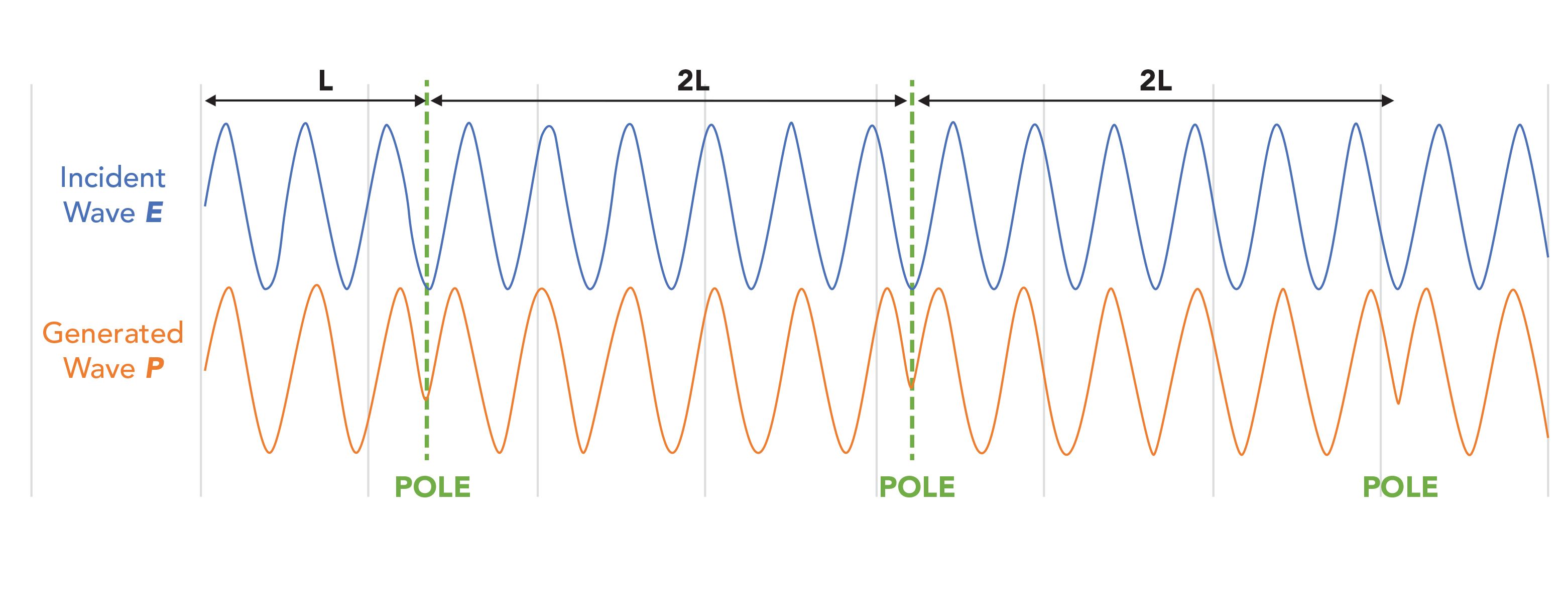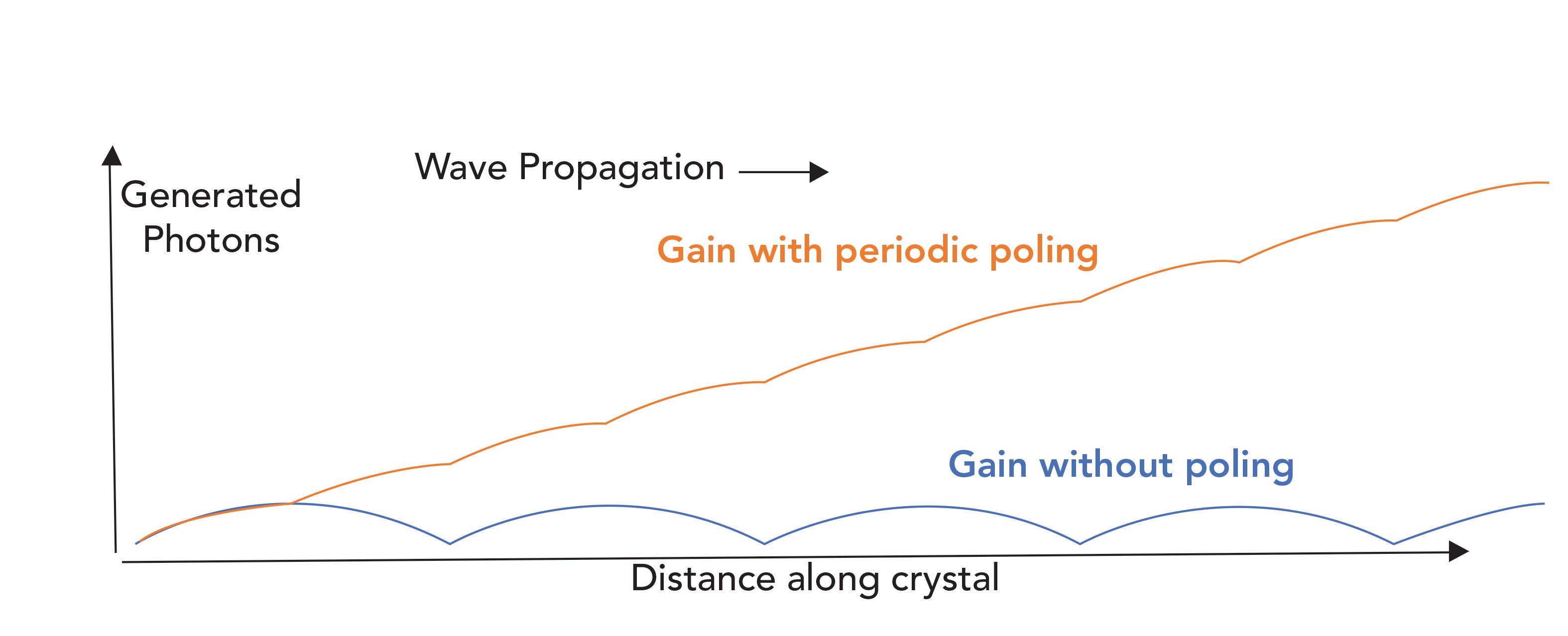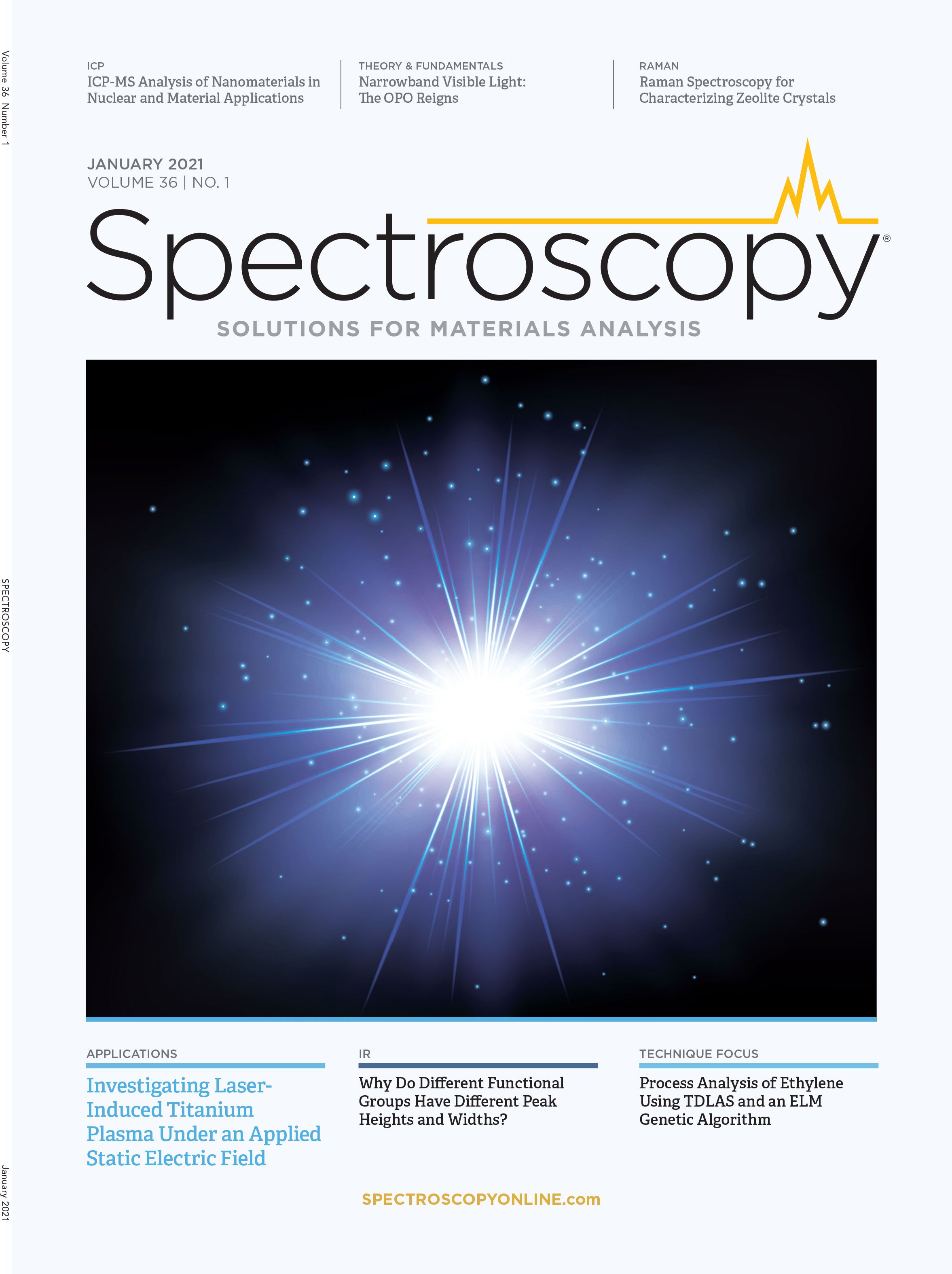Narrowband Visible Light: The OPO Reigns
Tunable narrowband light sources are essential for measuring fluorescence, reaction energetics, and other challenging measurements in chemical, biological, and physical systems. In particular, the optical parametric oscillator (OPO) is an indispensable tool.
Fundamental research often requires narrowband light to accurately map out fluorescence spectra, reaction energetics, or other key questions in chemical, biological, and physical systems. Tunable narrowband sources are often key to this endeavor. Pulsed or continuous wave, the optical parametric oscillator (OPO) has come a long way, dropping in price while improving in performance. We explore the landscape and some common uses of this essential tool for spectroscopists.
When it comes to spectroscopy, the combination of narrowband light sources with broadband detectors (or the converse, narrowband detection with broadband light sources) are the equivalent of the surgeon’s scalpel. They allow us to see deeply into the spectroscopic fine structure, providing experimental data to feed models, probing atomic and molecular structure, and allowing the science of spectroscopy to move forward.
For nearly a century before the advent of the laser, spectroscopists only had narrowband detectors. Kirchhoff and Bun- sen’s work with their “spectroscope” led to the discovery of rubidium and cesium, and the mapping out of many of the fundamental emission lines in atomic spectroscopy, as the pair feverishly fed element after element into their “Bunsen Burner” and recorded spectra. Of course, Kirchhoff would go on to use the spectroscope to study radiative equilibrium (leading to the eponymous “Kirchhoff’s Laws”) and make contributions across the landscape of physics, including thermodynamics and fluid mechanics.
While Kirchhoff and Bunsen could even then get reasonable resolution and sensitivity on their detectors (Kirchhoff dispersed light from the sun over nearly three meters, for example, and at least for steady-state experiments in flames or studying solar emission, photographic plates could be exposed for long periods), it was hard to obtain sufficient intensity of monochromatic light to do the inverse experiment. In other parlance, while it was easy to obtain fluorescence or absorption spectra, it was difficult to obtain excitation spectra.
This situation changed with the advent of the laser. Early solid state and gas lasers emitted one or more narrowband lines, which had some limited spectroscopic usefulness. It was the development of the organic dye laser in 1966 that provided revolutionary access to narrowband light in the visible and near-infrared. This resulted in an explosion of scientific and spectroscopic work, as nicely summarized by Frank Duarte in 2003 (1). However, as Duarte notes, “...over the years dye lasers have acquired a reputation in some quarters as being ‘user unfriendly.’” Duarte does a good job of defending the many contributions and the unique attributes of dye lasers, including the available high pulse energy, femtosecond, and narrow line width, among several. However, the reputational aspect is hardly addressed, except though technological advances, and your author’s opinion and experience is that although dye lasers offer a certain amount of “fun” and are great tools for certain problems, they are also more difficult to maintain and operate than might be optimal.
Enter the optical parametric oscillator (OPO).
Optical Parametric Oscillator (OPO) Operation
OPOs were actually invented in advance of the dye laser, in 1965, by Giordmaine and Miller of Bell Laboratories (2). Their work utilized lithium niobate, which continues to be an important crystal in many OPOs on the market today. They were able to convert incoming 529 nm light from a CaWO4:Nd3+ laser to tunable light over the range of 970–1150 nm by vary- ing the temperature of the oscillator crystal. They observed conversion of only some of the pump pulses, and stated that the conversion appeared highly dependent on the mode structure of the pump beam. These observations would prove prescient; while research continued, development of the OPO into a practical device would depend strongly on the availability of very high quality crystals and appropriate laser sources and coatings that were not available until the late 1980s and 1990s.
I was fortunate to witness some of the explosion in OPO research as a post-doc and staff member at Sandia National Labs in the late 1990s. Colleagues Tom Kulp, Scott Bisson, and the late Peter Powers at the Combustion Research Facility were among those at the forefront of the developments, and I had a ringside seat. The race was on to develop wavelength coverage, and set new power and pulse-length milestones. Many of the applications of OPOs have been focused around spectroscopy, and OPOs have opened up new vistas for optical sensing.
Harmonic processes for frequency conversion in crystals, including second harmonic generation, sum and difference frequency generation, and nonlinear processes (such as OPO operation) have two fundamental constraints. The first, naturally, is energy conservation—the sum of the energy of photons produced must equal that of the input photons. The second requirement is a phase matching requirement; briefly put, the crystal structure must support the generation of photons in phase, or the photons destructively interfere, and there is no gain built up in the crystal. Changing the angle or the temperature of the crystal changes the effective periodicity of the crystal, which can change the wavelength(s) generated.
The difficulty with the phase requirement is that there are few natural crystals that accommodate particular laser wavelengths, and, of course, those crystals would then only accommodate a single wavelength or its harmonics. The optimum condition (from a developer’s point of view) would be a crystal that could accommodate multiple wavelengths, or indeed any input wavelength.
Quasi-Phase Marketing
This is where periodically-poled lithium niobate (PPLN) re-enters the picture. For an incident wave E, a generated wave P will become out-of-phase and destructively interfere after a certain number of periods. The method of quasi phase matching, which was developed independently by Armstrong and associates (3) in 1962, and by Franken and Ward (4) in 1963 (actually before OPOs were invented), can correct for this destructive interference. If the phase of the generated wave is inverted periodically, after a set “interaction length” L when E and P begin to get out of phase, the phase relationship is effectively reset: if the two waves were φ out of phase at the point of the inversion, they will be -φ out of phase after inversion. If φ is relatively small, this allows gain to build up during each interaction length and minimizes destructive interference.
Physically, quasi-phase matching is accomplished by periodic poling in the crystal. This is done in PPLN by periodically (in space) imposing a very strong electric field on the crystal, that permanently switches the electric dipole (dependent on the position of the Li and Nb ions in the crystal). This periodic poling allows quasi-phase matching for particular sets of wavelength, and, in fact, different poling spacings can be introduced at different points in the crystal. This allows a single crystal to be used for different wavelength regions. Figure 1 provides a conceptual illustration of the periodic poling on the generated wave, in the case that the generated wave has a slightly longer period than the incident wave. Figure 2 provides an illustration of the gain build-up in the generated wave with and without poling. Without poling, destructive interference eliminates gain buildup.
FIGURE 1: Effect of periodic poling on the phase between the incident and generated waves.

FIGURE 2: The gain build-up in the generated wave with and without poling.

Typical PPLN is doped with magnesium oxide to increase its optical damage threshold. Effective anti-reflective (AR) coatings have also been key, because PPLN has a high refractive index (>2), and, without AR coatings, losses in OPOs would be extreme. Several other crystals are also used in OPOs, for example BBO (barium borate), KTP (potassium titanyl phosphate), and ZGP (zinc germanium phosphide). Different crystals are used in various wavelength regions, some more suited for infrared (IR) generation, and some for the visible and ultraviolet (UV).
OPOs in Practice
With the principle of energy conservation and quasi-phase matching, it is possible to understand not only straight harmonic generation, but nonlinear sum frequency and difference frequency generation. In sum frequency generation, two input photons are converted by the crystal to a single photon with the combined energy of the two input photons. Second harmonic generation is a special case of sum frequency generation, in which the two incoming photons are the same wavelength.
Difference frequency generation may be considered to have several forms: 1) two input frequencies can go into a crystal to produce multiple output photons at the difference frequency; 2) a single input frequency can produce two lower frequency beams (where the higher frequency is called the signal and the lower is called the idler); 3) two input frequencies can be input into a crystal, and one of them can be amplified, with the amplified output at one of the input frequencies, and a lower frequency output, in an optical parametric amplifier (OPA).
With all of these options, it is not surprising that OPOs and their cousins take many forms. OPOs were quite temperamental early on, had limited tuning ranges with gaps in tuning, and were relatively low in power. OPOs available on the market today have considerably improved in range and ease of use, while also coming down in price as crystals and coatings have become less expensive. The ability to grow very spatially precise poled crystals in multiple materials, combined with precision movements, has contributed to this improvement, to large extent, as well as the increasing availability of stable pump lasers at numerous wavelengths. To achieve reliable tuning, modern OPOs are all computer-controlled.
An example of the range of product offerings can be seen in the plethora of OPO and OPA products from Spectra-Physics. The Spirit-OPA is an ultrafast amplifier that is designed for 350 fs pumping at up to 30 W, and outputs 630–1020 nm on the signal and 1040–2600 nm on the idler beams. Either can be modified with harmonics to extend the range further. Their TOPAS Prime OPO is meant for pumping from 770–830 nm with a sub-150 fs beam and has even a wider range. The Spectra-Physics Inspire has a smaller range, but uses only a single set of optics and crystals. They also offer the continuous wave MixTrain laser sum and difference frequency mixers among their many laser offerings.
There are also companies that specialize in OPOs, foremost among them Opotek, headquartered in Carlsbad, California. They focus on the nanosecond market, with OPOs ranging from 210 nm to 3100 nm, typically 10–20 Hz repetition rate, and relatively high energy. Their Radiant and Opolette models are among their leading offerings; with 4 to 7 cm-1 line width over the entire tuning range of each device. InnoLas, from Austria, has similar nanosecond-class offerings of OPOs that operate from about 400 to 2100 nm, tailored either to diode-pumped or flashlamp-pumped Nd:YAG, and reach 150 mJ in pulse energy.
Other companies have niche offerings, like APE, which offers an OPO solution able to reach below 200 nm, if deep-UV coverage is required. APE also offers picosecond and femtosecond OPOs to be pumped with either NIR lasers around 1 μm, or Ti:Sapphire. The latter offerings include GHz repetition rates. Coherent markets and sells the Chameleon MPX and Compact OPO systems, produced by APE, that are Ti:Sapphire-pumped and cover wavelengths as broad as 340 to 4000 nm. Toptica offers the TOPO CW OPO laser for NIR and MIR applications; the system covers 1450–4000 nm.
Finally, Ekspla has a notable range of picosecond- and nanosecond-class OPOs built in their factory in Vilnius, Lithuania, with possibly the broadest range of repetition rates and energies among the 15 models of OPO that they sell worldwide. Ekspla systems include models with an integrated pump laser and OPO, and also purpose-built systems like the PhotoSonus, with 150 mJ of pulse energy for photoacoustic imaging. Ekspla also has systems with very narrow, transform-limited line widths.
OPOs Enabling Science
As one would expect, OPOs are used in a variety of ways to facilitate discoveries in science. They have largely replaced dye lasers as tunable sources, due to their convenience and relatively recent reliability gains. For example, in biophotonics they are a popular tool for fluorescence microscopy. Tissue typically scatters strongly under visible excitation, with the result that visible light penetration is limited to about 100 μm, unless the tissue is specially treated by a “clearing” technique to minimize the scattering. One way to circumvent this problem is to use near-infrared (NIR) light, which penetrates much more deeply (often millimeters). Intense, ultrafast pulses of NIR light can generate multiphoton absorbance and excitation in fluorescent tags and nanoparticles, as we discussed in this column in 2020 (5).
Likewise, OPOs are an indispensable tool in physical chemistry, where the tunable source can be used to probe particular rotational, vibrational, and electronic states of molecules and atoms. This is useful, for example, for probing energy transfer in molecular beam experiments, or to precisely understand energy levels and particular transitions.
In my own home field of combustion science, planar laser-induced fluorescence is used to determine the distribution of radical species (such as OH and CH), as well as pollutants (such as NO), as they form in prototypical laboratory flames and in actual devices. OPOs are indispensable in such studies; their high repetition rates allow flame dynamics to be captured with fidelity, and statistical or spatial distributions can be easily developed.
OPOs have evolved from the temperamental creatures that they were in the relatively recent past, to reliable and versatile tools today. The variety of pump lasers, repetition rates, and wavelength range available on the market today makes the OPO definitely the reigning king of tunable laser sources.
References
(1) F.J. Duarte, Opt. Photonics News 14(10), 20–25 (2003).
(2) J. Giordmaine and R. Miller, Phys. Rev. Lett. 14(24), 973 (1965).
(3) J.A. Armstrong, N. Bloembergen, J. Ducuing, and P.S. Pershan, Phys. Rev. 127, 1918–1939 (1962)
(4) P.A. Franken and J.F. Ward, Rev. Mod. Phys. 35, 23-39 (1963).
(5) S.G. Buckley, Spectroscopy 35(1), 16–21, (2020).
Steven G. Buckley

Steven G. Buckley, PhD, is the General Manager of the Applied Systems business and Vice President of Engineering at Ocean Insight, and an affiliate associate professor at the University of Washington, and has started and advised numerous companies in spectroscopy and in applications of machine learning. He has approximately 40 peer-reviewed publications and 6 patents. His work in practical optical spectroscopy, such as LIBS, Raman, and TDL spectroscopy, dovetails with the coverage in this column, which reviews methods (new and old) in laser-based spectroscopy and optical sensing. Direct correspondence to: SpectroscopyEdit@ mmhgroup.com.

New Study Reveals Insights into Phenol’s Behavior in Ice
April 16th 2025A new study published in Spectrochimica Acta Part A by Dominik Heger and colleagues at Masaryk University reveals that phenol's photophysical properties change significantly when frozen, potentially enabling its breakdown by sunlight in icy environments.
Tracking Molecular Transport in Chromatographic Particles with Single-Molecule Fluorescence Imaging
May 18th 2012An interview with Justin Cooper, winner of a 2011 FACSS Innovation Award. Part of a new podcast series presented in collaboration with the Federation of Analytical Chemistry and Spectroscopy Societies (FACSS), in connection with SciX 2012 ? the Great Scientific Exchange, the North American conference (39th Annual) of FACSS.
Can Fluorescence Spectroscopy Evaluate Soil Dissolved Organic Matter Dynamics?
February 20th 2025A new study published in Chemical Engineering Journal by researchers from Northeast Agricultural University in China reveals that biochar aging, influenced by environmental factors like UV exposure and wet-dry cycles, alters dissolved organic matter composition and affects its effectiveness in remediating cadmium-contaminated soil.
New Fluorescent Raman Technique Enhances Detection of Microplastics in Seawater
November 19th 2024A novel method using fluorescence labeling and differential Raman spectroscopy claims to offer a more efficient, accurate approach to detect microplastics in seawater. Developed by researchers at the Ocean University of China, this method improves both the speed and precision of microplastic identification, addressing a key environmental issue affecting marine ecosystems.